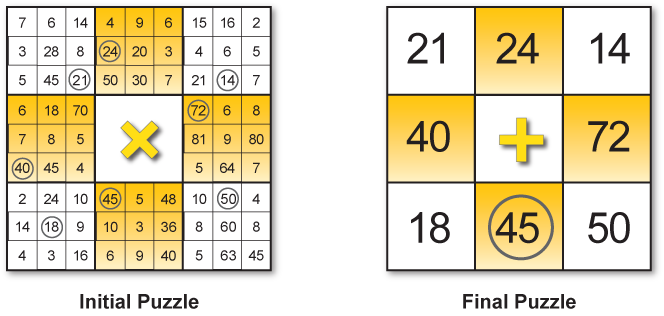About
Kakooma
Kakooma starts with a deceptively simple idea: in a group of numbers, find the number that is the sum of two others. Sounds easy, right? Sometimes it is, but other times the answer is right in front of you and you just can’t see it. To solve a single puzzle, you often end up doing dozens of calculations in your head, sometimes more than a hundred! Before you know it, your mind is sharper and your math skills are better. Kakooma makes you smarter.

Playing KAKOOMA
Kakooma is great for people of all ages. In the example below there are five, 5-number mini-puzzles. In each
mini-puzzle, find the number that is the sum of two others. Use all 5 sums to create one final “puzzle-in-a-puzzle” and solve.
Start with the mini-puzzle at the top. Since 10 + 7 = 17, the answer is 17. Next, look at the mini-puzzle to the right. Since 4 + 2 = 6, the answer is 6. Solve the three remaining mini-puzzles the same way and all 5 sums form … another puzzle! In this final puzzle, once again find the number that is the sum of two others. The final answer is 10 + 6 = 16.
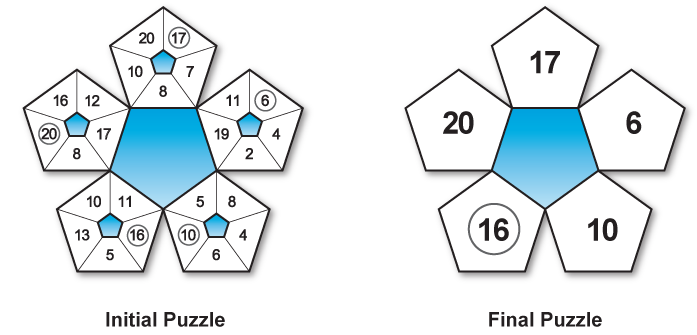
Difficulty levels
The size of the puzzle and the size of the puzzle’s numbers determine its difficulty. Puzzles with 4 groups of 4 numbers
are the easiest, while those with 9 groups of 9 numbers are the hardest. Players can choose both the size of the puzzle and
the size of the numbers.
Here is an example of a more difficult puzzle with 9 numbers and sums up to 25. Starting at the top left, the answer to the first mini-puzzle is 22 since 14 + 8 = 22. Solving the remaining 8 mini-puzzles gives a final puzzle with a final answer of 14 + 9 = 23.
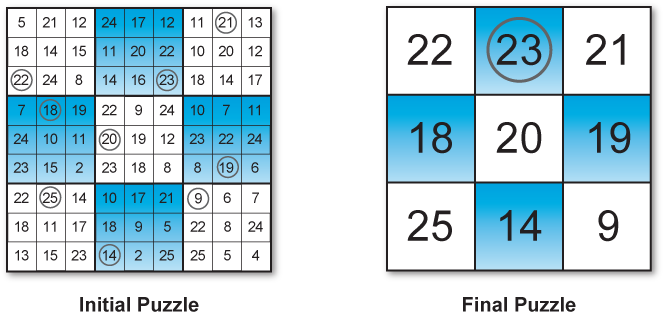

Kakooma Negatives
Kakooma can also be played with negative numbers. The rules are the same -
find the number that is the sum of two others - but now each puzzle contains
both positive and negative numbers. Below is an example of a 6-number puzzle.
Starting with the top left mini-puzzle, the answer is 2 since -4 + 6 = 2. Moving to the mini-puzzle on the right, the answer is 7 since 6 + 1 = 7. Solve the four remaining mini-puzzles the same way and all 6 sums form the final puzzle. Here, the final answer is 2 + 5 = 7.
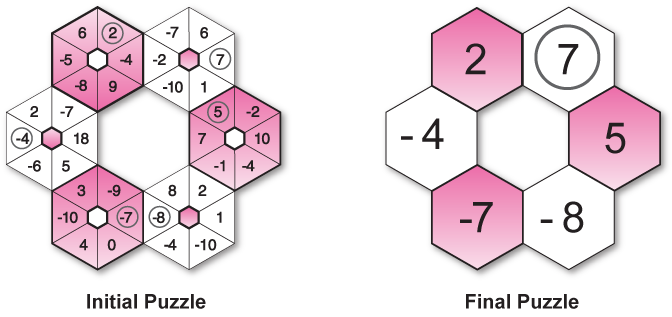

Kakooma Fractions
Ready for a new challenge? Now try adding fractions instead of whole
numbers. Below is an example of a 5-number Kakooma Fractions puzzle.
Starting with the mini-puzzle at the top, the answer is 5/12 since 3/12 + 1/6 = 5/12. Finding common denominators and equivalent fractions is the key to solving these puzzles. Moving to the right, the answer is 9/12 since 5/12 + 2/6 = 9/12. Solve the three remaining mini-puzzles the same way and once again all 5 sums form the final puzzle. The final answer is 5/12 + 4/12= 9/12.
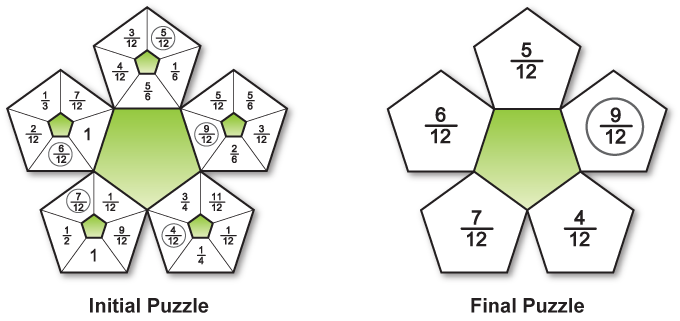

Kakooma Times
With Kakooma Times, players switch from finding sums to finding products. This is a great way for students
to get the repetition and practice they need to master their multiplication tables. Below is an example of a
9-number puzzle.
Starting with the top, left mini-puzzle, the answer is 21 since 7 x 3 = 21. Moving to the right, the next answer is 24 since 6 x 4 = 24. Solve the six remaining mini-puzzles the same way and all 8 products form the final puzzle.
In this last puzzle, note that the operation switches from multiplication back to addition (since the numbers are double-digits). In this final puzzle, find the number that is the sum of two others. The final answer is 21 + 24 = 45.
